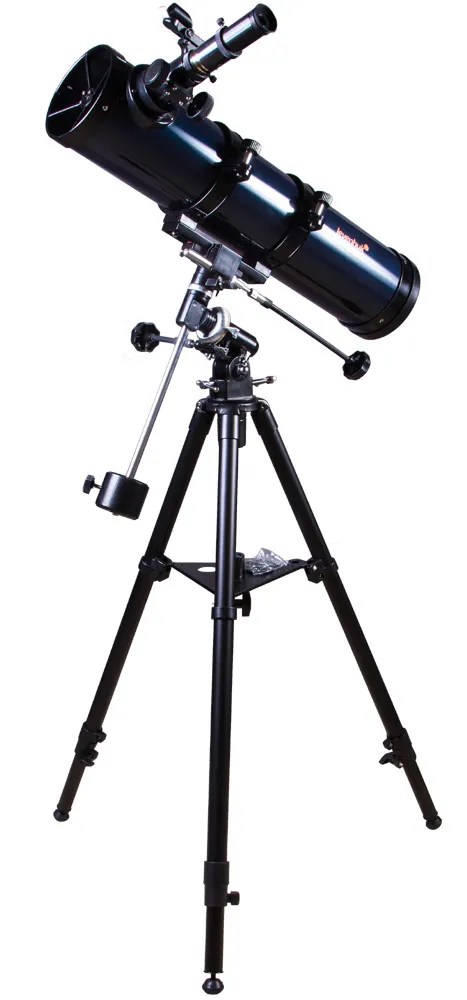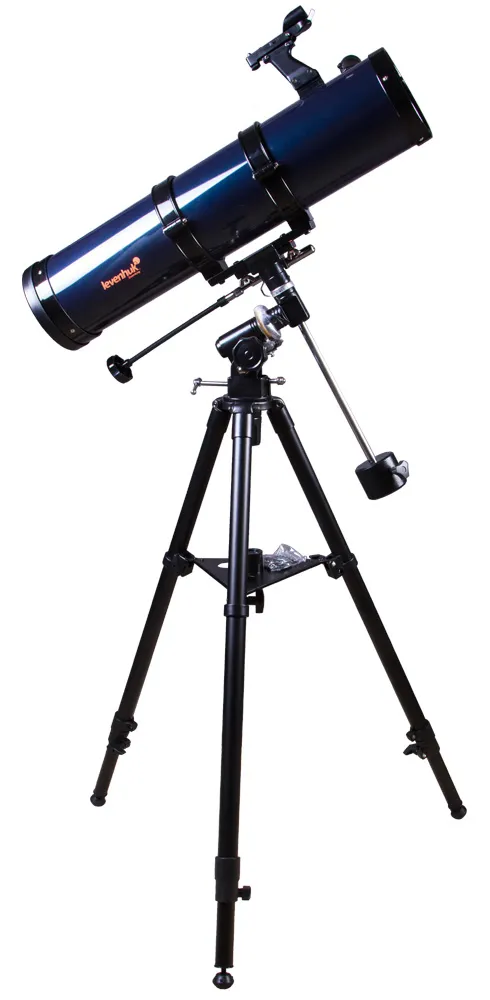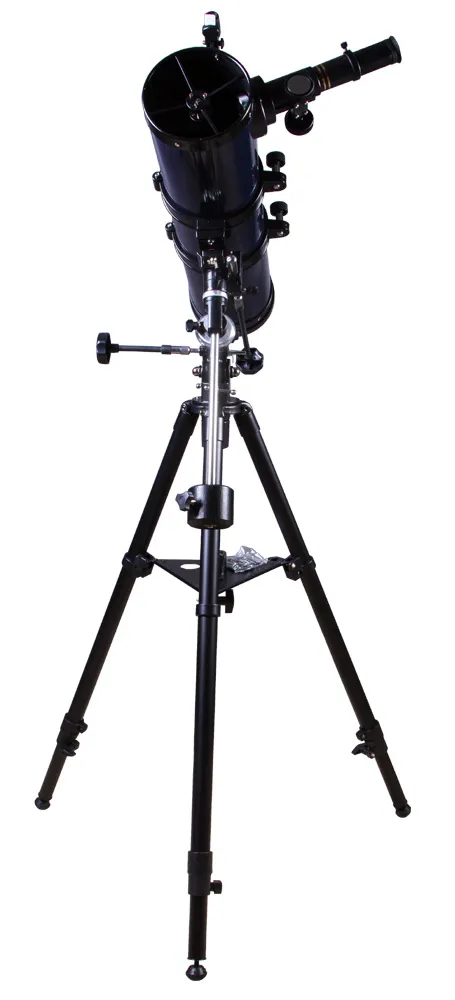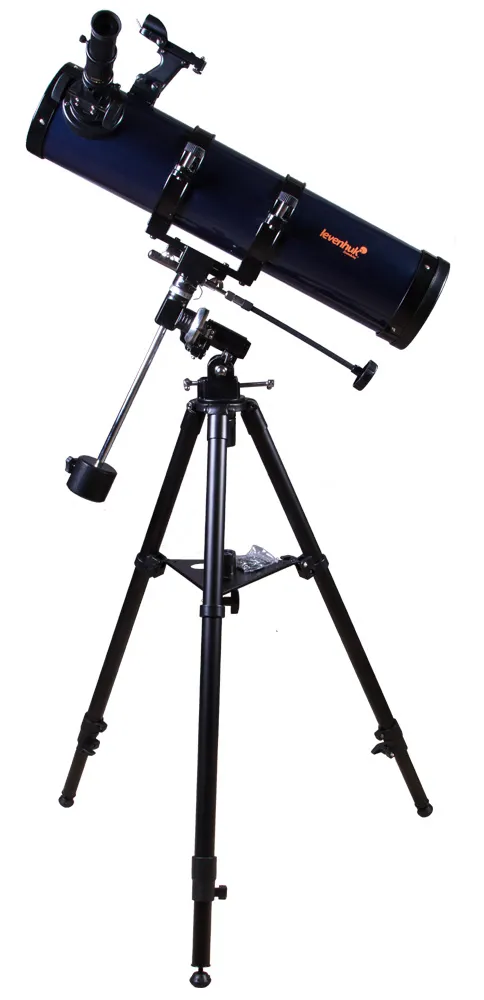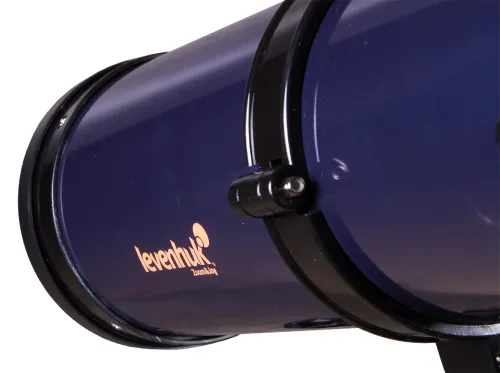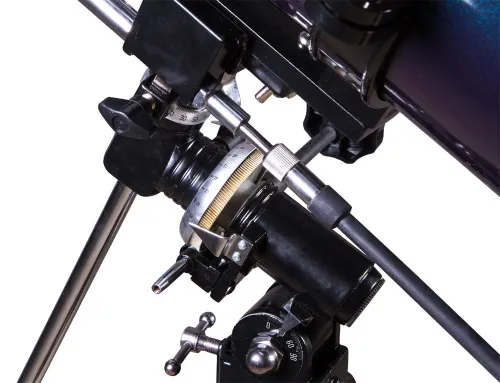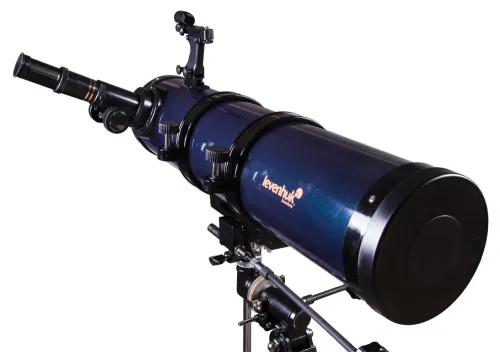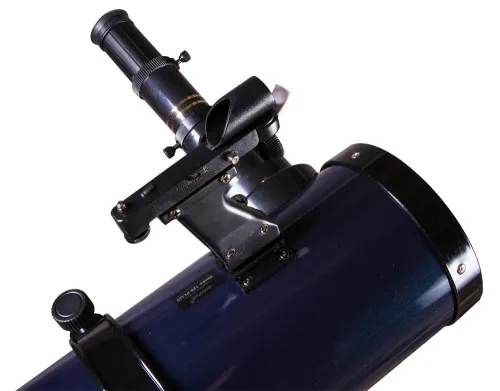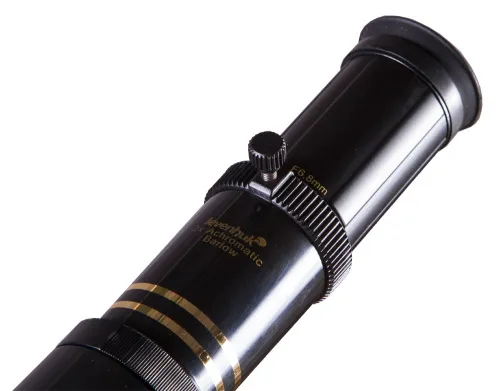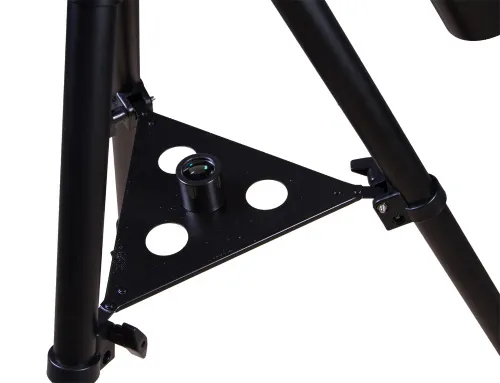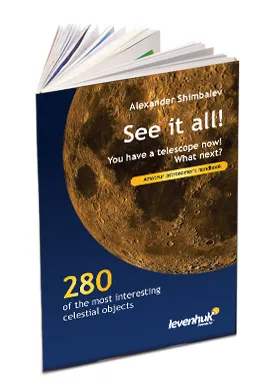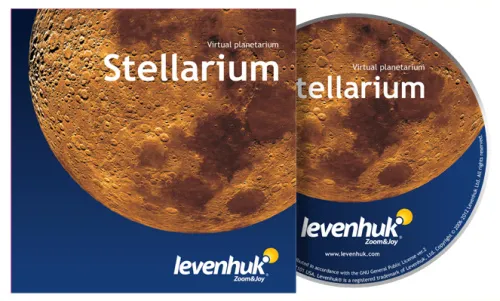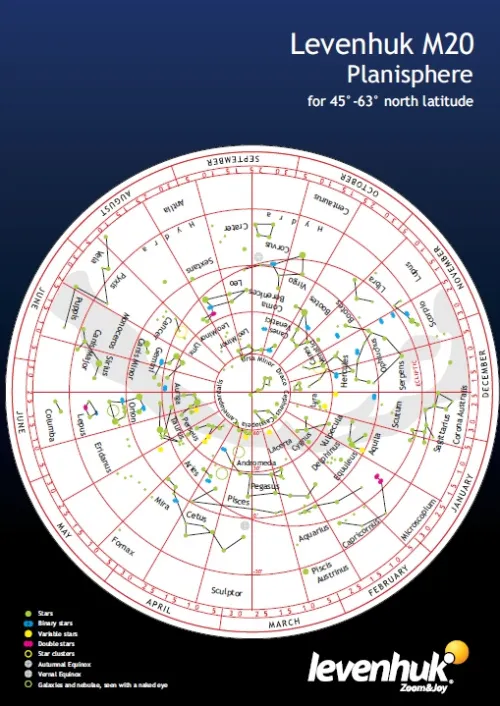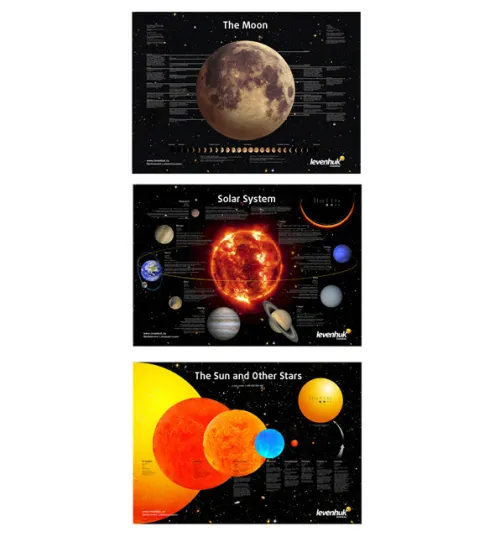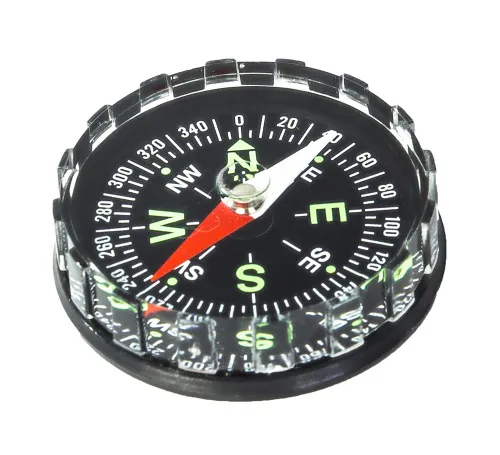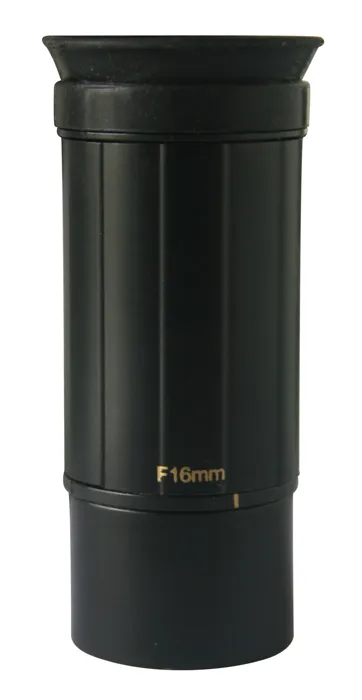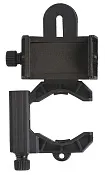Levenhuk Strike 120 PLUS Telescope
Newtonian telescope. Aperture: 114mm. Focal length: 700mm
| Product ID | 65620 |
| Brand | Levenhuk, Inc., USA |
| Warranty | lifetime |
| EAN | 0611901509396 |
| Package size (LxWxH) | 83x29x43 cm |
| Shipping Weight | 13.622 kg |
Levenhuk Strike 120 PLUS Telescope is a Newtonian reflector that makes an excellent choice for any beginning astronomer. The telescope features a 114-mm primary mirror diameter and a focal length of 700mm. High-quality optics with a special coating allow you to see a large variety of astronomical objects: from lunar mountains and lunar craters with a diameter of about 3 miles to globular clusters.
Optics
Levenhuk Strike 120 PLUS is a Newtonian reflector. The reflecting optical design of the telescope provides quality images free of chromatic aberrations. Optical elements are covered with a special high-reflective aluminum coating, which minimizes light loss inside the telescope, and thus allows it to produce bright and crisp images.
The kit of the Levenhuk Strike 120 PLUS telescope includes two eyepieces. The KF 25 eyepiece provides lower magnification power and may be used for general observations and locating celestial objects. The second eyepiece – Zoom 6.8–16mm – features variable focal length and magnification. It is ideally suited for detailed study of astronomical objects. The kit also contains an achromatic 2x Barlow lens that will help you significantly extend the range of the telescope’s magnifications. The Red Dot finder also included in the kit will make locating necessary objects in the sky a lot easier.
Mount and tripod
Levenhuk Strike 120 PLUS Telescope is installed on a German equatorial mount. This type of mount has two axes of rotation: the right ascension (RA) axis and declination (DEC) axis. By setting the RA axis parallel to the Earth's axis of rotation you can easily follow astronomical objects.
The reinforced metal tripod is highly durable and provides a stable base for the instrument.
Advanced kit
The advanced kit of this model allows you to use it to the fullest. In addition to optical accessories the kit includes print and electronic materials that will be interesting and useful not only for beginners but also for experienced astronomers. In the kit you will also find a convenient telescope case.
The unique kit of Levenhuk Strike PLUS Telescope contains:
1. "See it all!" Astronomer's Handbook. This practical handbook was created specifically for beginning astronomers. It contains valuable information on over 280 celestial objects and the cosmos in general, as well as colorful star charts and facts on the design of different telescopes.
2. Stellarium. This is 3D planetarium software that allows you to plan your observations and explore the night sky several years in the future. The database contains over 600,000 stars, planets of the Solar System, the Moon, comets and asteroids, galaxies, nebulae and star clusters. All this can be rendered in just a few moments and studied directly on your computer!
3. Space Posters Set (Moon, Sun and Other Stars, Solar System). These posters will help you explore the universe and learn interesting facts about the Solar system, its planets and satellites, and various distant stars. Colorful illustrations and captions present necessary information in an easy-to-read format. The posters are 84x60cm (33x24in).
4. Levenhuk M20 Large Planisphere. This rotating star chart is a handy tool that allows you to find out what celestial objects and constellations are visible above the horizon at a given date and time. All you need to do is align the viewer and the star chart, providing a date and time.
5. Levenhuk DC45 Compass. Truly an invaluable tool that can help you orient yourself to the Northern pole on your observation site. Afterwards, it is easy to locate Polaris in the night sky, which provides a starting point for further observations.
6. 6.8–16mm zoom eyepiece. This is a wonderful eyepiece that can completely replace several eyepieces. By adjusting its focal length, you can change the highest practical power without having to replace the eyepiece. It allows you to enjoy planetary observations and forget about additional calibrations.
7. Levenhuk Zongo Telescope Case. This case is made of a sturdy waterproof material, and the padded lining protects the telescope from impact. The case is also fitted with handle straps for easy transportation.
The kit includes:
- Levenhuk Strike PLUS Telescope on a German equatorial mount
- Steel tripod
- 1.25" Rack-and-pinion focuser
- Eyepieces: KF 25
- 6.8–16mm zoom eyepiece
- 2x Barlow lens
- Finder scope: Red Dot
- "See it all!" Astronomer's Handbook with descriptions of 280 celestial objects
- Space Posters Set (Moon, Sun and Other Stars, Solar System)
- Planisphere
- Stellarium software CD to assist you during your astronomical observations
- Compass
- Levenhuk Zongo Telescope Case
- User manual and lifetime warranty
| Product ID | 65620 |
| Brand | Levenhuk, Inc., USA |
| Warranty | lifetime |
| EAN | 0611901509396 |
| Package size (LxWxH) | 83x29x43 cm |
| Shipping Weight | 13.622 kg |
| Optical design | reflector |
| Optical scheme | Newtonian |
| Primary mirror diameter (aperture), mm | 114 |
| Focal length, mm | 700 |
| Highest practical power, x | 186 |
| Aperture ratio | f/6.14 |
| Resolution threshold, arcseconds | 1.02 |
| Limiting stellar magnitude | 12.4 |
| Eyepieces | KF 25mm, zoom 6.8–16mm |
| Eyepiece barrel diameter, in | 1.25 |
| Barlow lens | 2x |
| Finderscope | red dot |
| Focuser | 1.25", rack & pinion |
| Tripod | steel |
| Telescope control | manual |
| Mount | equatorial, EQ1 |
| User level | elementary, beginners |
| Assembly and installation difficulty level | easy |
Convenient diagrams that describe how to install additional accessories on refractors and catadioptric telescopes
Find out how to assemble a telescope on an example of the Levenhuk Skyline 90x900 EQ telescope
This short guide will help you avoid typical mistakes and learn more about telescope and mounting types
The basics of astronomical observations for beginners
In this article we have gathered answers to some of the most frequently asked questions about telescopes
The most interesting celestial objects you can observe with Levenhuk telescopes
How telescopes work?
You can actually perform observations from your balcony!
All about telescope sizes, types, magnification, and mounts
Learn how to set up and use the telescope properly
Astronomy in light-polluted skies. Find out what you can observe in the city
Read an interesting comprehensive article on telescopes for little astronomers
The pictures are made with Levenhuk telescopes
Celestial objects you can observe with telescopes of different apertures
Colored and vivid images of galaxies, planets and star clusters entrance everyone who is fascinated by boundless space
Find an interesting review on the history of the changes to a refracting telescope
To make the process of choosing a telescope easier, we will tell you about the characteristics of the most popular types of telescopes today
Learn everything you need to know about refractor telescopes to make the right choice

